Timeline of Human Evolution
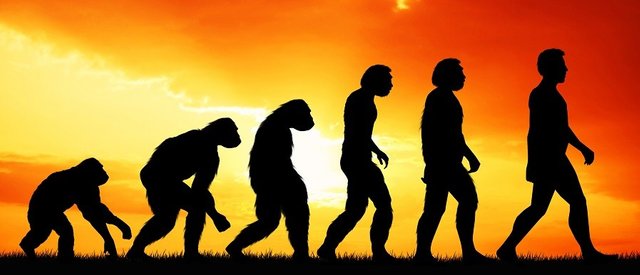
Human evolution from a common ancestor with the apes all the way to today happened over millions of years. There were many dead ends and hybridization along the way. Species lived along side each other for hundreds of thousands of years, possibly battling each other for precious resources in an ever changing natural environment.
Scientists know of at least 15-20 of early humans and there is always a debate on where each one fits into our evolutionary history. The problem is that we have to work with incomplete puzzles, the finds are often just a few fragments. If just 40% of a skeleton can be found it is a huge deal. I have created a list of the known species that most researchers believe have directly led to modern day humans.
Pierolapithecus catalaunicus
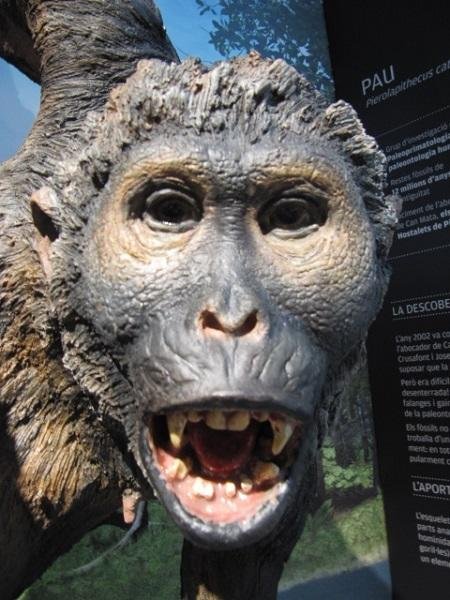
Discovered in Spain in 2004, this animal is believed to be the closest common ancestor to both humans and the great apes. Based off its teeth and jaw shape its diet was fruit based and the bone structure suggests that it lived its life in the trees. It had a flat face and a wide nose, similar to a chimpanzee and was just slightly smaller than one too. While the skeleton was found in Spain, it is known that the Mediterranean Sea has expanded and contracted due to climate changes many times in the past and a land bridge to Africa could have been possible.
Sahelanthropus tchadensis
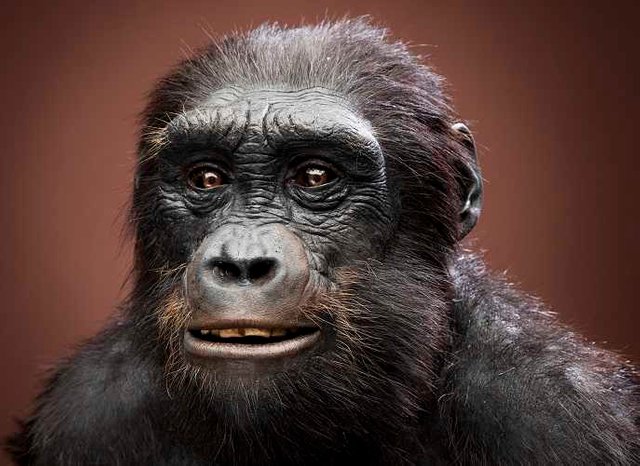
Discovered in Chad back in 2001, this species may be the earliest hominid so far found. It shows primitive hominid-like skull, jaw, and teeth traits such as a worn down tip on the canine teeth as it is in humans. It had a relatively flat face and protruding muzzle similar to a chimp. The way that the spine connects to the base of the skull suggests that it was bipedal, it could walk on two legs. The remains of Sahelanthropus was found near fossils of freshwater fish, crocodiles, rodents, and monkeys it has been said that they lived in a wooded environment near a lake.
Since only a fractured skull was found, the above claims have been called into question by the scientific community. The braincase of this animal showed it to have a brain that was 350cc, compared to a chimpanzee brain that is 390cc. Some say it shouldn’t be classified as a hominid and that it was related to both humans and chimps, but not their ancestor.
Ardipithecus ramidus
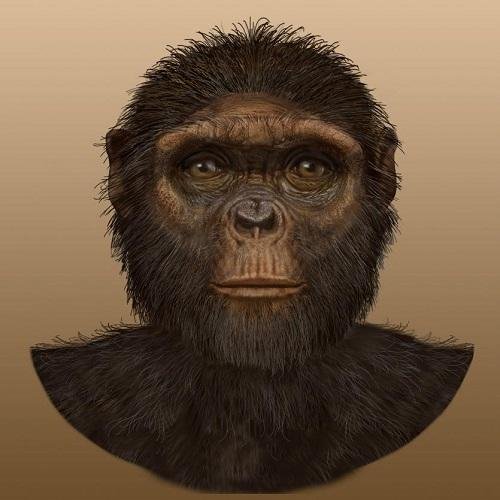
Discovered in Ethiopia in 1992, it was initially thought to be the fossils of an Australopithecus species, but was given its own genus in 1994 after more fragments showed its differences. The older species from around 5.6 million years in the past is called Ardipithecus kadabba and it evolved into Ardipithecus ramidus by 4.4 million years ago.
Ramidus had a brain size between 300-350cc or about 20% of the size of modern humans, and that it lacked significant sexual dimorphism (differences beyond the sexual organs). It had a divergent large toe for grasping with its foot, but that same foot was also rigid. Researchers believe that they didn’t spend much time walking on two feet, but were adapting to that end. Its teeth show that it could have been a generalized omnivore, as it lacked specialization to any particular type of food. These findings lead researchers to believe that they lived in wooded areas that slowly were becoming savannahs.
Australopithecus afarensis
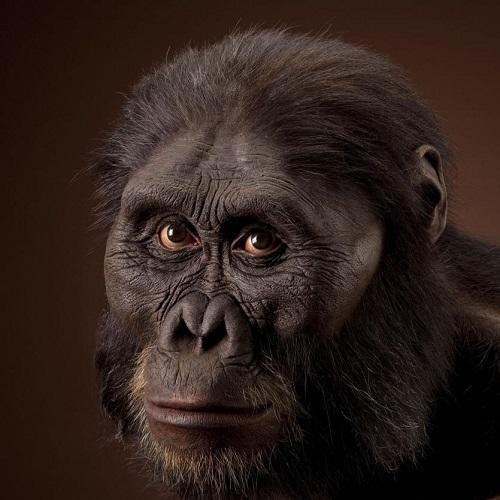
Discovered in Ethiopia in 1974, this is the species of the famous ‘Lucy’ and is one of the best known early human species with fossils discovered from more than 300 individuals. The difference of size between the sexes was great, males were around 4’11” (151cm) and weighed around 92lbs (42kg) while females were 3’5” (105cm) and weighed 64lbs (29kg). Children grew quickly and may have reached adulthood in 3 years or so, with a full developed brain being about 440cc, or about 1/3rd of the size of a modern humans.
The evidence is great for this species to primarily move around on two feet. The hips and knees show that they walked in a similar fashion to how we walk and the ability to grasp with its feet was severely reduced, indicating that they spent much of their time on the ground. There have even been fossilized footprints of two of these creatures walking side by side using only their feet. So they must have been living on the savannah and open woodlands eating fruits, seeds, and roots. While their long arms point to the idea that they may have climbed into trees at night for safety.
Homo habilis
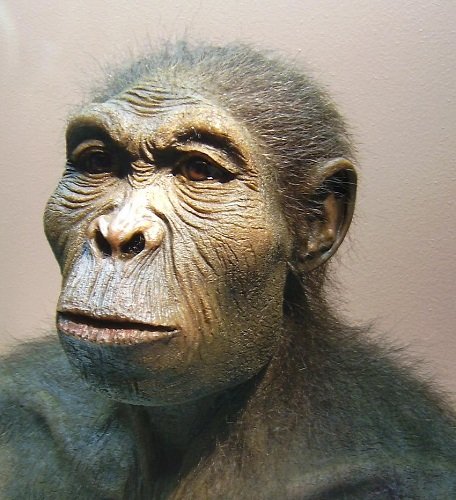
The first species in our genus, Homo habilus was discovered in Tanzania by the unearthing of a cranium in 1959. Named the ‘handy man’ because primitive stone tools are often found near the fossils. The fossils show an Australopithecine type body with a more human-like face, as the ‘snout’ was less prominent and started to look more like a nose. The tools were thought to be used to break open scavenged bones to obtain the marrow, but they were omnivores and ate anything they could find. The tools allowed them to prosper in hostile environments previously out of reach to primates and survive the ever changing climate.
They were small creatures with an average height of about 4’3” (130cm) and a brain size somewhere between 550cc to 687cc which is about half the size of modern humans. They had arms of a longer proportion to their body than we do, but their thumbs were wider than previous ancestors which allowed more dexterity for the use of tools. They also lived side by side with Homo erectus for nearly half a million years and Paranthropus boisei for nearly their entire existence. They are also thought to be the ancestor of the shorter lived Homo ergaster.
Of course there is controversy, with some scientists saying that they should be classified under the Australopithecus genus, not Homo.
Homo erectus
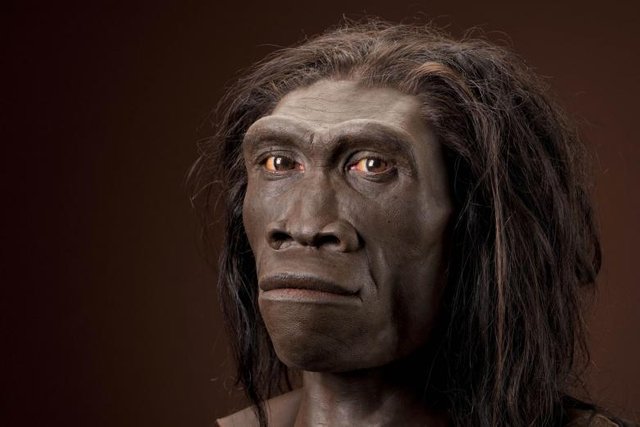
Discovered on the island of Java in 1891 a skeleton was nicknamed Java Man, and it was later classified as the first Homo erectus. A discovery in China in the 1920s was called Peking Man. In 1984 a 5’3” skeleton of an 8-11 year old male Homo erectus was found near Lake Turkana in Kenya. This showed that they had migrated out of Africa and had a large range of occupation.
They had large variations between sexes and even individuals, with heights between 4’9” to 6’1” (145-185cm) and weighed from 88-150lbs (40-68kg). They had elongated legs and shorter arm compared to the torso which shows that they had adapted to a life on the ground. Body hair started to get thinner which allowed for sweating and they could not only walk upright, but run efficiently too. It is thought they would hunt by chasing their prey until it was exhausted while H. erectus would sweat to cool down and stay on them. This ability to hunt and not just scavenge led to more fats and proteins in the diet which allowed for a greater brain size, about 900cc or 75% the size of humans today.
They also developed stone axes and other tools more advanced than just stone flakes as well as possibly being able to control fire. Evidence suggests that they lived in small groups with communal living. They were thought to share responsibilities like child care and caring for the elderly, and all the social skills those things required. One skull was found with all its teeth missing from old age, researchers believed that he was fed by others or others chewed his food for him. All this shows that they were members of their group and cared for all. A small population managed to survive in Indonesia until 70,000 years ago or thereabouts.
Homo heidelbergensis
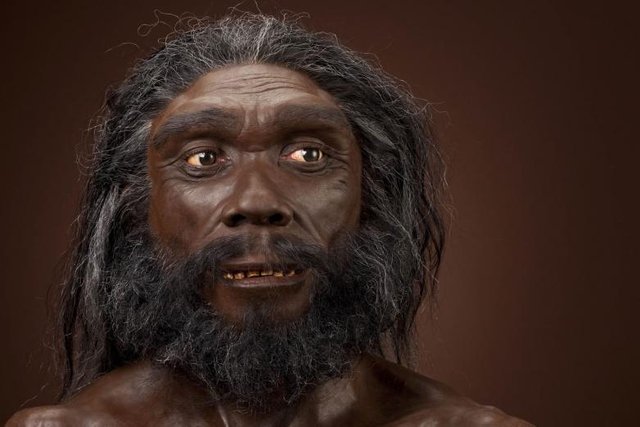
A mandible was discovered in 1907 in Germany, but the majority of fossils began to be unearthed in 1997. They migrated out of Africa and into Europe and Asia. The Asian group evolving into Denisovians, the European group becoming Neanderthals, and the African group evolving into Homo sapiens. Their face was a cross between Homo erectus and ours, with a very large browridge, flatter face and elongated brain cases that housed a brain that was at least 90% as large as ours, but could even have been the same size. Their bodies were short and wide, adapted to conserve heat in the colder environments in places other than Africa. Males were around 5’9” (175cm) and weighed 136lbs (62kg) while females were 5’2” (157cm) and 112lbs (51kg).
They could control fire and use wooden spears, and the hunt of large animals was commonplace. It is also known that they were the first to build shelters out of wood and rock and so did not have to rely on naturally occurring abodes.
There is also evidence that they buried their dead and had a ceremony. Researchers also believe that they were able to plan for the future and perform symbolic behaviors. One skeleton was found buried with a pink quartz hand axe, indicating a belief in an afterlife.
Our cousins the Neanderthals and Denisovans
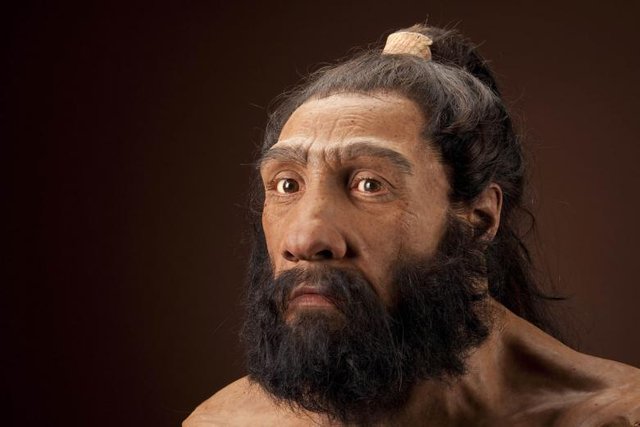
While they were not our direct ancestors, they have contributed to the DNA of most humans alive today and so deserve a mention for that. These two species were more closely related to each other than they were to modern humans, but if you have European or Asian ancestry then you are carrying about 1-4% of your DNA from them. This is due to interbreeding when our species co-existed on the planet together for thousands of years. Sub-saharan Africans without outside ancestry do not carry this DNA and can be said to be pure blooded Homo sapiens.
While we have known about Neanderthals for over 150 years, we know very little about Denisovans. Only a finger phalanx, two teeth, and a toe bone have been found. The finger was destroyed to investigate the mtDNA which showed that modern humans carry their genes and so interbred with them. Their living range was from Siberia to Australia, with the Neanderthals living from Europe to Siberia and there is proof of interbreeding.
They were both shorter and stocky peoples, based off the finger of the Denisovan female that was very broad, but nothing much more than that can be said of the size of the Denisovans. The brawniness is thought to be an adaptation to the colder environments where they lived. They had angled cheek bones and a large nose to warm and humidify cold, dry air. Neanderthals had a brain larger than modern humans with a size of 1600cc that is notably higher than ours of 1250-1400cc. Neanderthal men were around 5'5” (164cm) and weighed 143lbs (65kg) while women were 5'1” (155cm) and 119lbs (54kg).
They created many tools from wood, stone, or bone. They have been known to bury their dead with flowers, build shelters, and made clothing and jewelry. They hunted large game and cooked the meat along with any vegetables. A 2014 study of fossilized feces showed a large part was vegetable matter, which contradicted previous beliefs that they were nearly exclusively carnivorous.
Maybe the most interesting information is that DNA evidence shows 8% of the DNA from these two species from an unknown source. So there is a third archaic ancestor that probably came from Homo heidelbergensis, but also possibly from some other yet to be discovered ancestor.
Main picture
My moment of honesty:
- My interests vary but I strive for quality work, check my blog for proof.
- I will not fill up your feed with crap, I have only resteemed twice.
- I will also reply to all your comments if they warrant any reply.
- These things I promise to you. So follow me, or don't. I want you to do what you want to.
@getonthetrain
Hey @getonthetrain!
I can't believe that a few friends and I were discussing about this very subject the other day. If only your article was out then, we would have the ultimate encyclopedic guide.
Incredible stuff as always, brother!
Oh man, bad timing then. I am sure I will eventually write an article on a subject that you will find yourself talking about pretty soon after. That is how the universe works out. :D
I did not give authorization to post about my family tree...
Haha! Since you are from the Philippines I think you have a large portion of your DNA from the Denisovans.
Great work, paleo-anthropology is fascinating!
Thanks, be sure to check back tomorrow as I will be posting a related article on it.
wonderful article...found it very interesting....very nice...keep up the good work
Thanks! I find it interesting to research. :)
This post has been ranked within the top 80 most undervalued posts in the second half of Nov 08. We estimate that this post is undervalued by $6.20 as compared to a scenario in which every voter had an equal say.
See the full rankings and details in The Daily Tribune: Nov 08 - Part II. You can also read about some of our methodology, data analysis and technical details in our initial post.
If you are the author and would prefer not to receive these comments, simply reply "Stop" to this comment.
Undervalued you say... story of my life :)